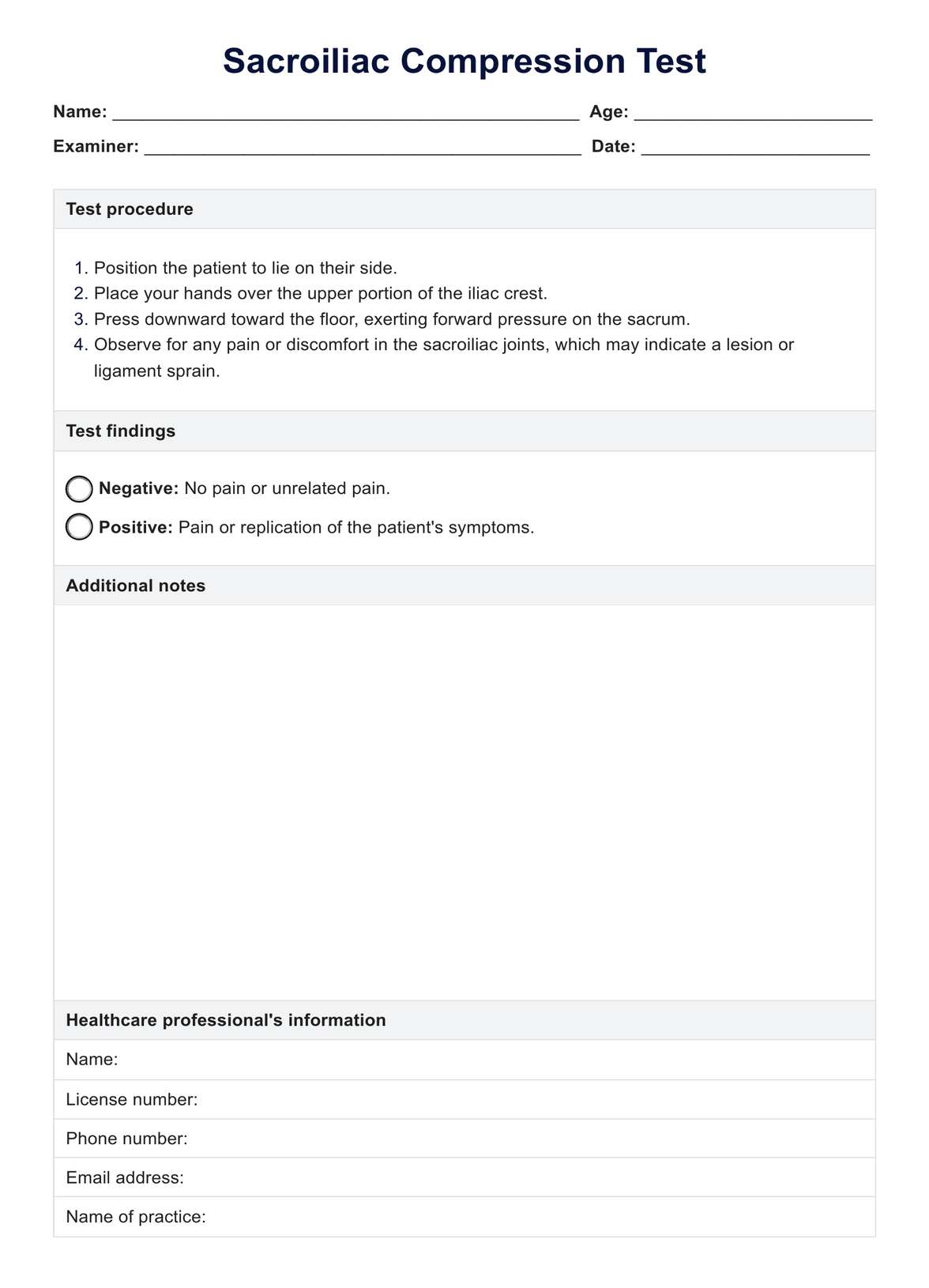The five common tests for assessing the sacroiliac joint include the Sacroiliac Compression Test, distraction test, thigh thrust test, Gaenslen's Test, and the flexion, abduction, and external rotation (FABER) test.

Sacroiliac Compression Test
Learn how to perform the Sacroiliac Compression Test with our comprehensive guide and template, ideal for diagnosing sacroiliac joint issues effectively.
Sacroiliac Compression Test Template
Commonly asked questions
The Sacroiliac Compression Test, also known as the SI joint compression test, sacral thrust test, sacral spring test, sacroiliac pressure test, or downwards pressure test, is an orthopedic physical assessment used to assess pain response and stability of the sacroiliac joint by applying downward pressure on the iliac crests to elicit pain or symptoms.
A positive SI Compression Test occurs when the applied pressure replicates the patient's symptoms or elicits pain in the sacroiliac area, indicating possible dysfunction or injury in the sacroiliac joints.
EHR and practice management software
Get started for free
*No credit card required
Free
$0/usd
Unlimited clients
Telehealth
1GB of storage
Client portal text
Automated billing and online payments











